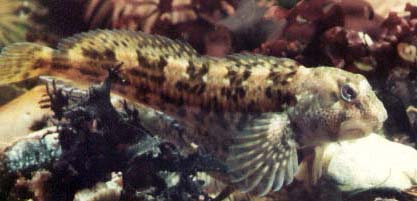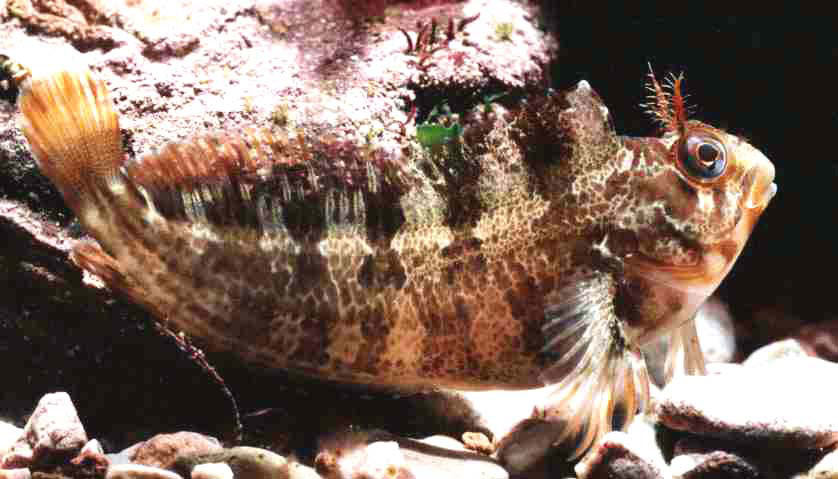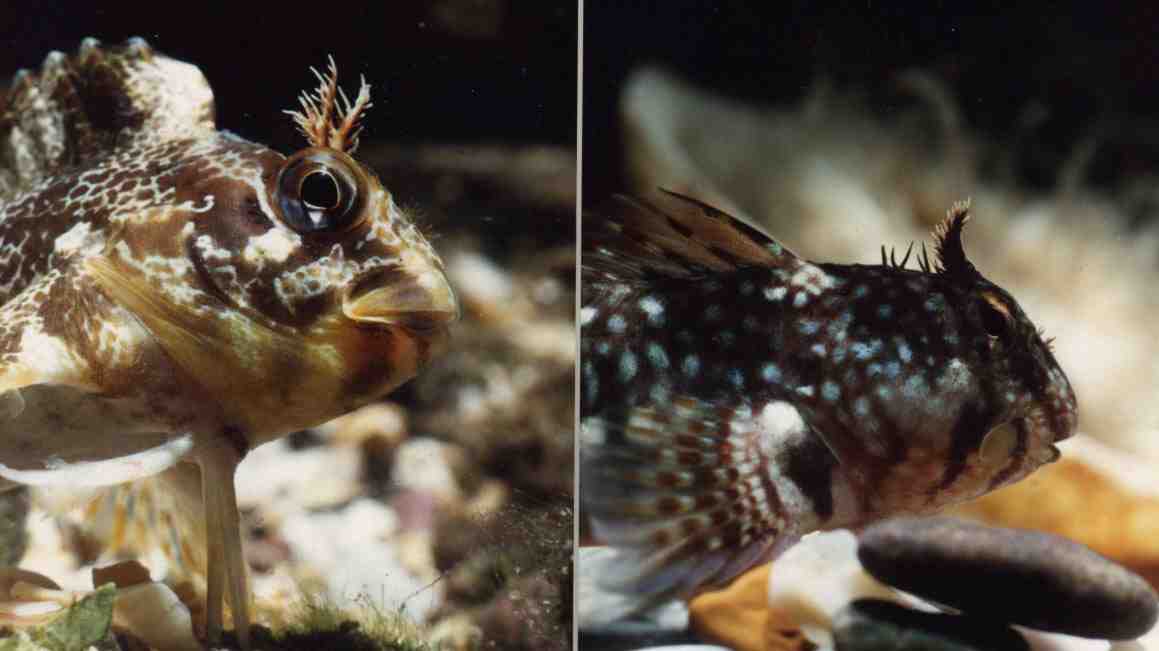
 |

The Common Blenny is also
called the Smooth Blenny because it lacks the lappets or fringe on the
forehead present in most of this family.

This fish is found off the south and west coasts of Britain and in seas as far south as the Mediterranean.
Another blenny species Parablennius ruber
has
been recorded in British seas. This new blenny is very similar to the Tompot
Blenny and specimens may have been overlooked before.
Image
 |
|
has been recorded from the western coasts of the British Isles, including Ireland, and may have been mistaken for the Tompot Blenny in the past. BMLSS Blennies |
|
Parablennius ruber |
There have been Scottish records as well of Parablennius ruber, not on the NBN Gateway grid.
Please send in any reports and photlographs of this fish

Montagu's
Blenny
Coryphoblennius
galerita
Newquay Headland, Cornwall (T R Daguerre 2015)
"Clearly able to see the fringed flap between the eyes on this individual and the blue spot patterning, restricted to the south west in British seas, this fish is a specialist living on the intertidal zone in areas where Acorn Barnacles, its main food source, have taken hold."

The rarest of the four British Blennidae is the Butterfly Blenny, Blennius ocellaris, which is found in deep water and never on the shore, although there are unconfirmed reports of specimens found intertidally on the Isle of Man coast. There is a photograph of this fish in the Plymouth Aquarium Guide by Geoff Potts, 1983. ISBN 0 903241 05 6.
 |
24
May 2012
This blenny was spotted at a depth of 12 metres at Eastern Kings, Plymouth. Its body was narrow, not deep like the Tompot Blenny, Parablennius gattorugine, about 150mm long, has head tentacles, as you can see, but lacks noticeable dark face markings. Report & Photographs by Martin Palmer
Comments
by Andy Horton
|
27
August 2011
A
Peacock
Blenny,
Salaria
pavo (Risso, 1810), was seen on the Brittany coast, northern France:
"It was found on the shore in the Golfe
du Morbihan
(a large natural harbour) in south Brittany.
They were the commonest fish on the shore, under rocks from mid-shore down."
Peacock
Blenny
Report
and Photograph
by David Wilson
on the Porcupine
MNHS Facebook
page.
The Peacock Blenny, Salaria pavo has recently has been found in considerable numbers in the Morbihan and near Concarneau, more towards the western tip of Brittany.
This the most northerly occurrence of this Mediterranean blenny recorded.
24
November 2007
We
saw a Striped Blenny, Parablennius
rouxi, (wrong ID, corrected)
off Plymouth. We dived at 50° 17.363N and 004° 00.187W out
of Fort Bovisand. It was a flat sandy bottom with low (1 metre) rocky ridges
covered in mixed animal turf at between 22 metres and 24 metres in depth.
There were loads of sponge species and quite a few pink seafans and Imperial
Anemones,
Aureliania
heterocer.
The
ID is wrong It is the
Variegated
Blenny Parablennius
pilicornis.
This blenny is a Mediterranean species and this is the first (?) record off the British coast.
|
|
|
News 2018 |
Membership Form |
|